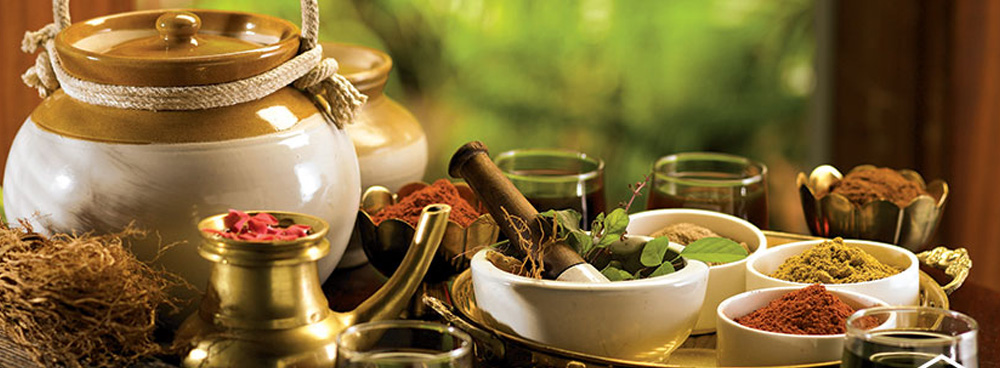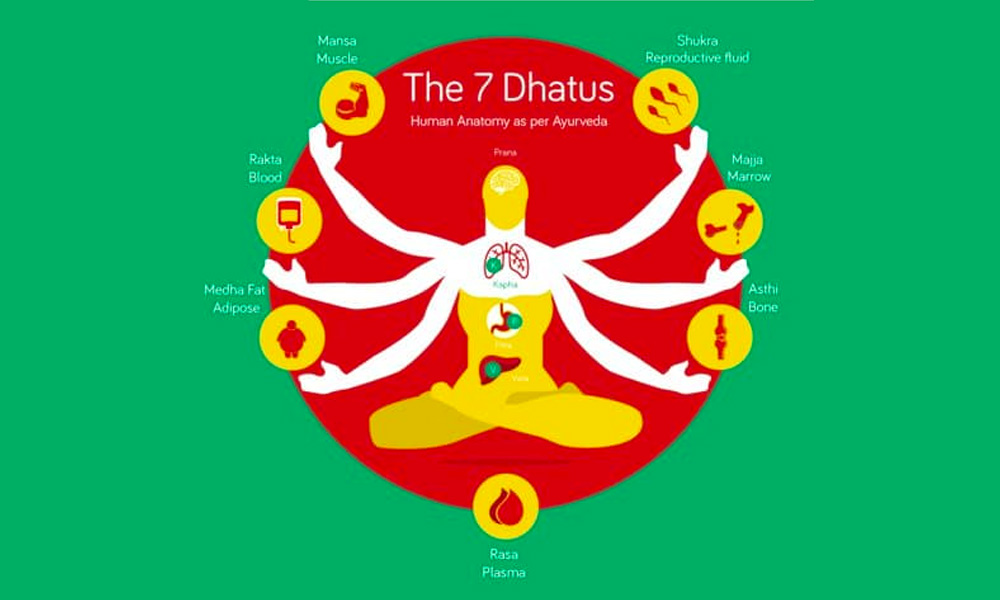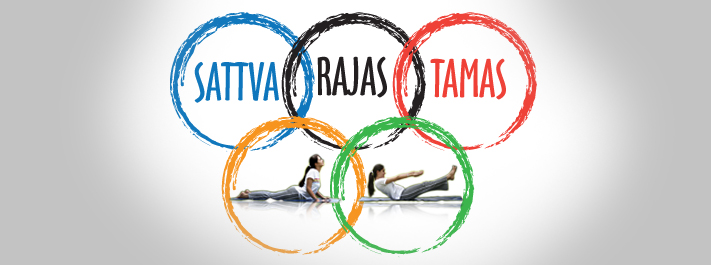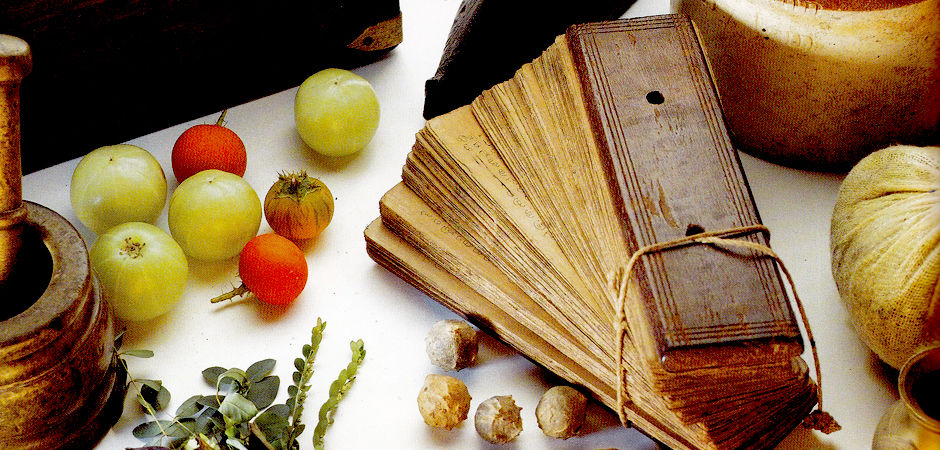Ayurveda
Ayurveda-vedanta: The Secrets of Life Science
Published
5 years agoon
By
Vedic Tribe
~By Atmatattva Das
krishna varnam tvishakrishnam sangopangastra parshadam
yajnaih sankirtana prayair yajanti hi sumedhasah
This is a verse from the Srimad Bhagavata Purana, ( 11.5.32 ):
“In the age of Kali, intelligent persons worship the incarnation of Godhead who constantly performs the sacrifice of congregational glorification of the Lord. Although His external complexion is not blackish, within, He is Krishna Himself. He is accompanied by His associates, servants, weapons and confidential companions.”
According to the opinion of many Acharyas who are experts in the study of Vedic literature, this verse describes the incarnation of Lord Sri Chaitanya Mahaprabhu, who descended to earth in the holy place known as Navadvipa on the bank of the Jahnavi (Ganges) river in the present state of West Bengal, India, in the year of 1486 A.D.
Lord Chaitanya Mahaprabhu, became famous as Nimai pandita (pandita means a great scholar of the Vedas; having been born under the medicinal neem tree, He was known as Nimai) from His early childhood, because of his erudite scholarship of the vast ocean of Vedic literature. He compared the ten essential subjects of the Srimad Bhagavata Purana with the ten medicinal roots of the Ayurveda (Dasha mulas).
He explained that, just like the dasha mulas made into an “arishtam” cures the diseases caused by the imbalance of the three dhatus, viz., Kapha, vayu and pitta (mucus, air and bile ), in the same way the dasha mulas of Srimad bhagavatam (the ten root subjects) will cure the diseases of material identification caused by the imbalance of the three gunas, viz, sattva, rajas and tamas (goodness, passion and ignorance).
According to Sri Chaitanya Mahaprabhu, Srimad Bhagavata Purana is a natural commentary on the Vedanta-sutras of Srila Vyasadeva:
artho ‘yam brahma-sutranam
bharatartha-vinirnayah
gayatri-bhasya-rupo ‘sau
vedartha-paribrmhitah
purananam sama-rupah
saksad-bhagavatoditah
“The Srimad Bhagavatam is the natural commentary to the Vedanta-sutra. The full purport of the Mahabharata is also there. The commentary of the Brahma-gayatri is also there and fully expanded with all Vedic knowledge. Srimad Bhagavatam is the supreme Purana, and it was compiled directly by the Supreme Personality of Godhead in His incarnation as Vyasadeva.”

All Vedantic expositions are commentaries by various Acharyas on the Vedanta sutras. So the ten essential subject matters of Srimad Bhagavata purana are like “Vedantic observation and prescription” by the (Ayur)Vedic acharya Vyasadeva based on his own study of the (Ayur)Veda shastra , the Vedanta-sutras.
Thus there is no doubt that the Ayurveda shastras and the Vedantic shastras have a very similar, if not actually the same, purpose to them. Having established this samya and sambandha (resemblance and relationship) of Ayurveda and Vedanta, let us make an analytical study of the subject through the eyes of both Vedantic and Ayurvedic Acharyas:
Medicine and healing are the two most important physical sciences explored and developed in the vedic times. The Nyaya, Vaiseshika and Sankya Darshanas are directly and intimately connected with these aspects of vedic knowledge.
Hatha yoga, Tantra physiology, Siddha and many other yoga schools of study extensively deal in their anatomy sections with subjects from the diffusion of energy in the body through the nervous system (based on the chakra linked management of energy) up to the study of embryology, heredity and genetic codes.
I – Ayurveda as part of the Vedas
The great Ayurvedic Acharyas have confirmed that Ayurveda is also part of the Vedas.
Susruta, one of the greatest Ayurveda Acharyas says in his Samhita (1.1.5) :
“Ayurveda is an upanga of the Atharva Veda, containing 100,000 verses in one thousand chapters. Brahma is the author of these verses.”
While hands and legs are angas of our body, toes and fingers are upangas. The academic view may not be able to digest that such a large upanga would have been part of the Atharva veda, because the entire available texts of the present Atharva veda seem to be much smaller than Ayurveda alone as described in the above text!

But still Acharya Susruta’s statement is an “apta vakya”; So it cannot be under-estimated or rejected as a mere exaggeration. There are reasons why the present numbers, shape and form of the vedic texts do not tally with facts and figures mentioned in the puranas and other vedic literatures. That is yet another area of research and we do not want to go off the track from our present discussion.
As Ayurveda is an upanga of the Vedas, it has the same purpose in a different denomination. The Upanishads which are considered as the end of the vedic knowledge, (veda-anta or Vedanta), aim at understanding the absolute truth, Brahman, beyond the functioning of external, material nama-rupa-jagat (the constantly changing energy of name and form). In a different denomination of the level of expression, Ayurveda also aims at the study and maintenance of the mechanism of the body with a purpose of giving full potential functioning duration so that the aim of life can be achieved. Thus there is Vedanta in the Ayurveda – and it is in no way of a lesser voltage than any other upanga of the Vedas.
According to Vedanta , life is eternal and was never produced or came into existence, at a particular time in the history. The Upanishads are very insistent on this point of Vedanta. The Katha upanishad 1.2.18 says:
na jayate mriyate va vipashcin nayam kutashca na babhuva kashcit
ajo nityah shashvato’yam purano na hanyate hanyamane sharire
“For the soul, there is neither birth nor death at any time. It does not come into being at any time, it is unborn, eternal and primeval. It doesn’t die when the body is put to death.”
The basic foundation of ayurveda is also on the same platform. The life or Ayu is fully comprehended as eternal and beyond the bodily existence. Such knowledge (veda), makes the phrase “knowledge of life”, viz., Ayurveda.
Vedas are considered as eternal sound vibration present in the akasha, shabda-brahman; The knowledge in the Vedas is eternal. Therefore, the knowledge of Ayurveda, this knowledge of life, its force in the body and its distribution through the dhatus by the life airs is also eternal. There has always been the continuity of the science of life, viz., Ayurveda.
The different styles of systematic compilation of the knowledge and instructions for the practical application of that knowledge certainly have an origin in recorded history. But the spirit and soul of this knowledge is directly part (upanga) of the eternal, undying vedic lore (Atharva veda). It has never taken “birth” at a particular time.
Even though at present only the treatises of Charaka and Susruta, which were commented on by later Acharyas, are taken as Ayurveda, according to Susruta himself Ayurveda is the original teaching of Brahma which was later simplified into eight parts to suit the degraded intellectual quality of the people of this age of Kali.
There are eight departmental limbs (ashtanga) of knowledge in ayurveda:
1) salya surgery
2) salakya treatment of head
3) kaya cikitsa treatment of ordinary diseases of body
4) bhuta vidya treatment of influence of goblins
5) kaumara bhrtya treatment for children’s diseases
6) aagada tantra antidotes to poisons
7) rasayana science of rejuvenation of body
8) vajikarana revival of sexual strength
Having anyalysed the authenticy of the ayurveda as part of Vedas, now we will explore the contents of the texts of ayurveda that confirms this conclusion.
II – Methods of treatment in Ayurveda.
The atharva veda deals with the treatment of diseases by seven kinds of prescriptions:
Svastyayana propitiatory rites
Bali offerings
Mangalahoma oblatons
Niyama penanaces
Prayascitta purificatory rites
Upavasa fasting
mantra chanting of sound vibrations
– Charaka Samhita 1.30.20
Even the dietery regulations and the use of medicines fall within the category of bali, mangalahoma, upasana and niyama.
I have myself seen the father of my family doctor who, was treating my father for respiratory malfunction, prescribe medicines with mantras to be chanted ; and it worked like magic! Later on I have done a wide range of research on this field, both theory and practice, and it would be worth it to write a separate samhita on this subject.
III – The Human Body as a modification of the Five Elements
The human body is regarded by Charaka as a modification of the five elements and the seat of consciousness (“cetanahistana bhuta”, Charaka Samhita 4.4.6).
This fully echoes the statements of the Bhagavad gita:
bhumir apo ‘nalo vayu kham mano buddhir eva ca
ahankara itiyam me bhinna prakrtir ashtadha
apareyam itas tvanyam prakritim viddhi me param
jiva-bhutam maha-baho yayedam dharyate jagat
“Earth, water, fire, air, ether, mind, intelligence and false ego – all together these eight constitute My separated material energies. Besides these, O mighty armed Arjuna, there is another, superior energy of Mine, which comprises the living entities who exploit the resources of this material, inferior energy.”
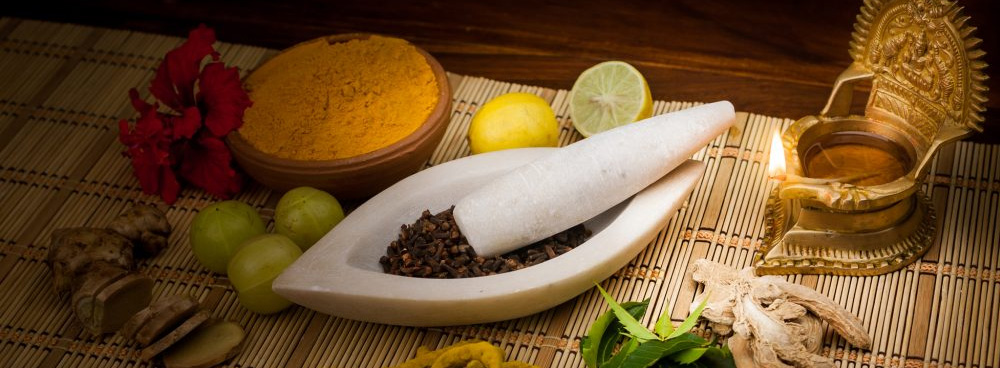
IV – Conception according to Ayurveda
The semen that passes into the ovary is constituted of equal parts of air, fire, water and earth. Later, ether becomes mixed with it in the ovary. Semen is the product of six kinds of fluids known as rasas.
vayu agni bhumy abguna padavat tad sadbhyo rasebhyah prabhavat ca tasya
– Charaka Samhita, 4.2.4.
The fetus cannot be produced simply by the union of the semen of the father and the sontia or blood of the mother. Such a union can produce the fetus, only when the atman with its subtle body becomes connected with it by prarabdha karma of the past.
V – Elements of Conception
The elements that contribute to the features of the new body are (from the mother’s side) blood, (from the father’s side) semen, and the karma of the individual soul.
The mental attitudes are determined by the state of mind of the individual in the previous life.
tesham viseshad balavanti yani bhavanti mata pitri karma jani
tani vyavasyet sadrishatva lingam sattvam yathanukam api vyavasyet
– Charaka Samhita 4.2.27
This same truth is confirmed in the Gita (8.6) as follows:
yam yam vapi smaran bhavam tyajatyante kevaram
tam tam evitikaunteya sada tad-bhava-bhavita
“Whatever state of being one remembers when he quits his body, O son of Kunti, that state he will attain without fail.”
Again, Charaka clearly explains that when one dies, the soul together with the subtle body, in a subtle state and mind, passes invisibly into a particular womb on account of karma, and then, when the conception takes place, develops one’s fetus:
bhutair caturbhih sahitah su sukshmair manojavo deham upaiti dehat
karmat makatvan na tu tasya drishyam divyam vina darshanam asti rupam
– Charaka Samhita 4.2.3
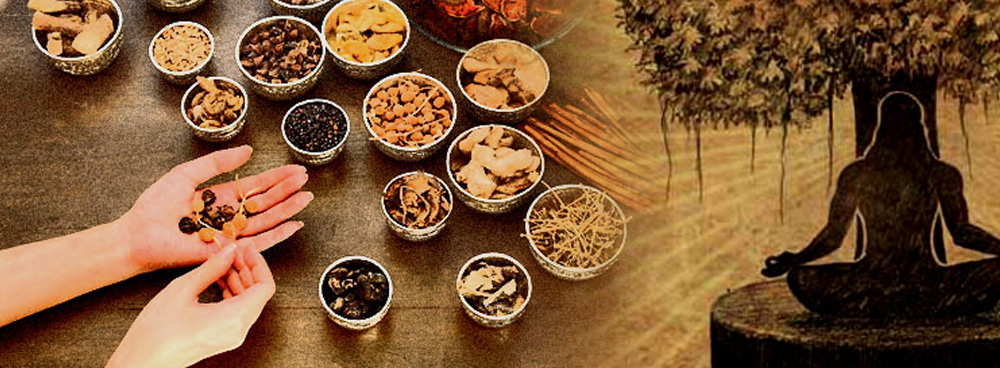
VI – The Cause of the Senses
The child does not owe sense organs to his parents; he alone is responsible for his sense organs (“atma jannindriyani”). The cause for the status of his sense organs is daiva, fruits of his prarabdha (fructified previous reactions).
Thus there is no hard and fast rule that a child of a man who has defective senses will also have defective senses. (Charaka Samhita 4.3.25) It is not just the bodies of the parents which make the body of the child. Ayurveda is very clear about this. The idea that bodies create bodies and consciousness is only a product of matter is not supported by the ayurveda. Such idea is declared as demoniac in the Gita (16.8)
asatyam apratishtham te jagad ahur anishvaram
aparaspara-sambhutam kim anyat kama-haitukam
“The asuras (demons) say that this world is unreal, with no foundation, no God in control. They say it is produced of sex desire and has no cause other than lust.”
VII – Awareness is intrinsic to the Soul.
The spirit soul, is always with awareness. It is never without the “sattva”, or the awareness:
na hy asattvah kadacit atma sattva viseshac copalabhyate jnana viseshah
– Charaka Samhita 4.3.26
In the material existence the spirit soul is aware through the mind stuff which is like a crutch that is used by a disabled person to walk. The healthy awareness is the consciousness which is the symptom of the spirit soul. This consciousness always exists and is not destroyed at the time of death.
In the Gita (2.17) we find:
avinashi tu tad vidhi yena sarvam idam tatam
vinasham avyayasyasya na kashcit kartum arhasi
“That which pervades the entire body (consciousness) you should know to be indestructible. No one is able to destroy that (only the body can be destroyed).”
Because this consciousness pervades the subtle mechanism, viz., the mind , one is able to perceive the world through the senses.
In the Gita (2.14) this is explained as follows:
matra-sparshas tu kaunteya sitoshna-sukha-dukha-dah
“O son of Kunti, by touch of the sense objects (by the mind) one experiences heat, cold, happiness and miseries….”
Even without the functioning of the senses, this mind is always connected with the sense objects. That the self has consciousness even when the senses do not operate is well illustrated by our dream knowledge when the senses are not operating. (Charaka Samhita 4.3.31)
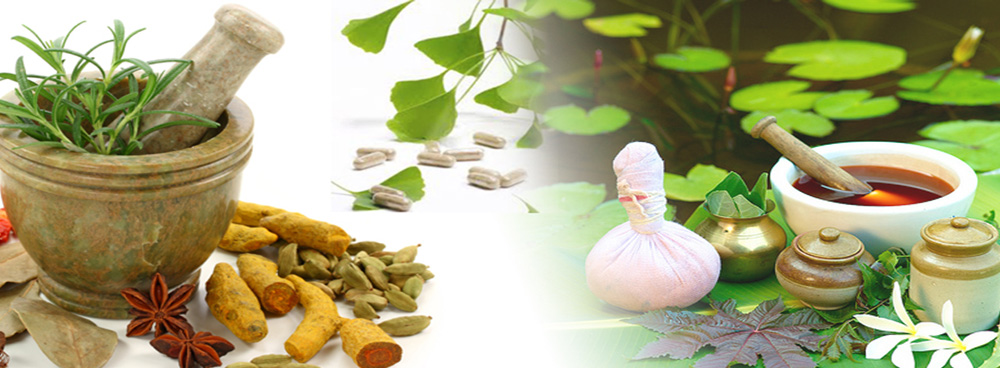
VIII – The Soul is without change.
The organs and the limbs potentially existed in the joint causes that operated to bring the fetus into form. Of all these causes the self remains unchanged even when the bodily perceptions undergo different changes, viz., heat , cold, happiness and misery;
nir vakarah paras tvatma bhutanam nirvisesa
sattva sarirayos tu visesad visesopalabdhih
Charaka Samhita 4.4.34
Thus the vikaras or changes of experiencing pleasure and pain, or other such perceptions, are actually due to the contact of mind with the sense objects, and they do not affect the soul proper.
Not only the changes of perceptions, but even the externally visible changes of growth and material transformation of the age and size of the body, does not affect the spirit soul. It remains unchanged, through all the changes of the body.
This ayurvedic statement is supported by the Upanisads and the Gita (2.13):
dehino ‘smin yatha dehe kaumaram yauvanam jara
tatha dehantara-praptir dhiras tatra na muhyati
“As the embodied soul continuously passes without changing, in spite of the bodily changes, from boyhood to youth and onwards to old age, it similarly passes into another body after death of the present body. A sober person is not bewildered by such a bodily change.”
IX – The three Dhatus and the three Gunas.
There are three dhatus which are the basic constituents of the body, and two modes, viz. passion and ignorance, that affect the mind. The imbalance of the three dhatus causes the physical diseases and the imbalance of the two modes cause the psychological problems.
The treatment of diseases through ayurveda is founded on the knowledge that by proper prescription of medicine and diet, a healthy person can maintain the equilibrium of the dhatus and a sick person can regain it. Charaka says:
dhatu samya kriya cokta tantrasyasya prayojanam
– Charaka Samhita 1.1.52
In the Vedanta, the “guna samya”, equlibrium of the three modes of nature , viz. sattva, rajas and tamas, which can be effected only by transcending them, is the prescription to become free from the disease of material existence, of repeated birth and death. In the Gita (14.20) it is said:
gunan etan atitya trin dehi-deha samudbhavan
janma-mrityu-jara-dukhair vimukte ‘mritam ashnute
“When the embodied soul is able to transcend these three modes of nature associated with the body of matter, he can become free from birth, death, old age and other miseries associated with these. Thus one can enjoy the nectar (of immortality) even while living in the body.”
Again in the second chapter, text fourty-five of the Gita we find:
trai-gunya-vishaya veda nistrai-gunyo bhavarjuna
nirdvandvo nitya-sattva-stho niryoga-kshema atmavan
“The knowledge of the Vedas deal mainly with the three modes of material nature. O Arjuna, become transcendental to these three modes (by the knowledge of these Vedas). Become free from all dualities and from all anxieties for gain and safety, and be established in your ‘self’.”
X – Imbalance in the Dhatus.
The cause of both the two categories of diseases, viz., physical and psychological, according to ayurveda is the imbalance in the usage of the three dhatus; Either excessive, deficient or mis- use:
kala buddhi indriyarthanam yogo mithya na cati ca
dvyasrayanam vyadhinam trividha hetu samgrahah
– Charaka Samhita 1.1.53
Vedanta confirms that by the improper use of the three modes of nature, viz., goodness, passion and ignorance, one aggravates the sickenss of “samsara”, the cycle of repeated birth and death; and in good balance of the gunas one becomes unaffected. In the Gita, (14.23) this is stated as follows:
udasina-vad asino gunair yo na vicalyate
guna vartanta ity evam yo ‘vatishthati nengate
“One remains unwavering and undisturbed through the reactions of the modes of material qualities by remaining neutral and transcendental, knowing that the gunas alone are active.”
It is interesting to meditate on the following analysis at this point of our comparison of ayurveda and Vedanta:
1) From the gunas manifest the five material elements, viz., earth, water, fire, air and ether.
2) The five elements constitute the physical body.
3) From the same gunas manifest the identity, intelligence and mind, which constitute the subtle body.
4) Three dhatus are direct manifestations of the three gunas (sattva, rajas and tamas) and they work by the function of two gunas (passion and ignorance).
5) The imbalance of the dhatus causes the diseases. Either excessive, deficient or misuse of the potency of the body causes this imbalance. The purpose of ayurveda is to prescribe medicine and diet to balance the dhatus.
6) The imbalance of the gunas causes the repetition of material existence and the miseries therein. The transcending of the gunas is the solution. Thus one becomes free from the miseries, even while living in the body.
XI – The quality of the Body.
The quality of the body is of two kinds:
Mala – that which contaminates the system, and Prasada – that which sustains and purifies. Charaka Samhita 4.6.17
The mala or contamination from which the soul should become free is explained as follows in the Mundaka Upanisad (3.1.9):
esho anur atma cetasa veditavya yasmin pranah pancadha samvivesha
pranais cittamsattvam otam prajanam yasmin vishuddhe vibhavatyesha atma
“The atomic soul can be perceived by perfect intelligence as floating in the five kinds of life airs (prana, apana, vyana, samana and udana). When the consciousness (that pervades from the soul through the entire body) is purified from the contamination of the five kinds of material airs, its spiritual influence is exhibited.”
The prasada, or purifying quality, is confirmed in the Gita (2.64-65) thusly:
raga-dvesha-vimuktais tu vishayan indriyaish caran
atma-vashyair vidheyatma prasdam adhigaccati
“One who is free from all attachment and aversion and is able to control his senses through regulative principles of freedom factually attains ‘prasada’.”
prasade sarva-dukhanam hanir asyopajayate
prasanna-cetaso hy ashu buddhir paryavatishthate
“In the prasada platform of existence, all miseries become non-existent. In such satisfied consciousness one’s intelligence is soon well established.”
XII – The Vedanta.
Just like many undesirable bodily growths form in the pores of the body, unconstitutional desires grow in the aggregate cosnsciousness forming the malas of desire and hatred (“icca dvesha sukham dukham sangata cetana driti” – Gita 13.6).
Sometimes the blood and other liquids, which are ingredients for the sustenance and growth of the body, turn into puss. Similarly, the real energy of consciousness, which is love for God, turns into lust for sense enjoyment, and the proxy consciousness in the subtle body, viz., external identity, intelligence and mind, become materially motivated.
Due to excessive, deficient and mis- use, the mucus, bile and air become either more or less than the required measure. Similarly, the three gunas which influence the consciousness try to supercede each other and thus pull the consciousness to bodies situated in different positions in the world.
Dalhana identifies the connection between the gunas and the dhatus as follows:
Vata – Rajas
Pitta – Sattva
Kapha – Tamas
In contrast to this, other Ayurveda Acharyas, such as Susruta, have explained the connection between the dhatus and gunas differently. Susruta states that in a functioning capacity as a cause for the designing of the body, Kapha acts in the upper portion, i.e., as sattva. This seemingly contradiction will be dealt with in our ensuing article, “Doshas, Dhatus and Gunas”.
Susruta says the dhatus are “deha sambhava hetava”, causes for the formation of the body. While acting in this function, the dhatus are connected to the gunas and bodily system as follows:
Vata – lower portion of the body – tamas
Pitta – middle portion of the body – rajas
Kapha – upper-portion of the body like pillars – sattva
Now let us look at what the Vedanta has to say about positions or formation of bodies according to the gunas. The Gita (14.18) states:
urdhvam gacchanty sattva-stha madhye tishthanti rajasah
jaghanya-guna-vritti-stha adho gacchanty tamasah
“Those situated in the mode of goodness gradually go upward to the higher planets. Those in the mode of passion live on the earthly planets. And those in the mode of ignorance do down to lower species.”
Thus the position that a spirit soul takes in this world determines his lifestyle for the maintenance of his existence through the impetus of the influencing modes of nature (“sthanam poshanam utayah…” – Srimad Bhagavatam).
The spirit soul is part and parcel of the divine; His struggle in the world is due to subtle and gross identity. Lord Krishna says in the Bhagavad Gita (15.7):
mamaivamsho jiva-loke jiva-bhuta sanatanah
manah-shashthanindriyani prakriti-sthani karshati
“The spirit souls in this world are My eternal fragmental parts. Due to the conditioned life, they are struggling very hard with the six senses, which include the mind.”
In an imbalanced state of the dhatus, the resistence goes down and other entities subsisting in the body tend to weaken and destroy the body. Similarly, the ulterior and external motives which are material and unconstitutional (to the soul), viz., the fruitive, speculative and exploitive motives, weaken the consciousness and destroy the mission and real goal of life.
The essential part of digested food is ‘rasa’ (chyle) and the contaminations which are left are the malas.
Similarly, if the sense perceptions and the ensuing attachments that are aroused by the modes remind the soul of its divine and original constitution (viz., sat – “eternal”, chit – “awareness”, ananda – “bliss”), that is the real ‘rasa’. (“raso vai sah…”)
Malas which create problems for the healthy functioning of the body are unconstitutional to the body.
The contaminations of the consciousness are unconstitutional to the soul. They are material, viz., temporary, full of ignorance and miserable, and thus just opposite to the original constitution of the soul. For this reason they are termed as malas, or “pollutions”.
Only for the purpose of experiencing the reactions of the previously fructified actions from past lives and thus finishing off the prarabdha karmas does one need to identify with the body. While perceiving this world with the senses and functioning with the material body, one has to balance between this rasa and the malas. That balanced life is known as sadhana:
sukha-duhkhe same kritva
labhalabhau jayajayau
tato yuddhaya yujyasva
naivam papam avapsyasi
“Do thou fight for the sake of fighting, without considering happiness or distress, loss or gain, victory or defeat – and by so doing you shall never incur sin.”
yuktahara-viharasya
yukta-ceshtasya karmasu
yukta-svapnavabodhasya
yogo bhavati duhkha-ha
“He who is regulated in his habits of eating, sleeping, recreation and work can mitigate all material pains by practicing the yoga system.”
Charaka says (4.28.3):
evam rasa malau sva pramanavasthitav ashrayasya
sama dhator dhatu samyam auvartayatah
Thus if rasa and mala are balanced and are kept in their required quantity they cooperate to sustain the body to ‘live’.
XIII – The conclusion of Ayurveda (Ayurveda-vedanta).
Vagbhatta says that as the manifold universe is nothing but the manifestations of the gunas, so all the diseases are but modifications of the three doshas,
As the three gunas work together manifesting the diversity in the world, the three doshas manifest the diversity of diseases.
arambhakam virodhe ‘pi mitho yadyad guna trayam
vishvasya drishtam yugapad vyadher doshatrayam tatha
– Astanga-samgraha 1.21
dhanvantarish ca bhagavan svayam eva kirtir
namna nrinam pururujam ruja ashu hanti
yajne ca bhagam amritayur avavarundha
ayushya vedam anushasty avatirya loke
“The Lord in His incarnation of Dhanvantari very quickly cures the diseases of the ever diseased living entities simply by His fame personified, and only because of Him do the demigods achieve long lives. Thus the Personality of Godhead becomes ever glorified. He also exacted a share from the sacrifices, and it is He only who inaugurated the medical science or the knowledge of medicine in the universe.” – Bhagavata Purana 2.7.22
As stated in the beginning of the Bhagavata Purana, everything emanates from the ultimate source, the Personality of Godhead – “janmady asya yathah”. It is therefore understood in this verse that medical science or knowledge of medicine was also inaugurated by the Personality of Godhead.
The body is a symbol of disease. The disease may differ from one variety to another, but disease must be there, just as there is birth and death for everyone. So by the grace of the Personality of Godhead, disease of body and mind are cured. Not only are diseases of the body and mind cured, but also the soul is relieved of the constant repetition of birth and death – our ultimate disease. The name of the Lord as the source of curing the disease of material existence is “bhavausadhi”, or the source of curing the disease of samsara.
sharire jarjaribhute vyadhigraste tathapare
oushadham jahnavi toyam vaidyo narayano harih
“When the body has lived its duration of time and has been caught up in the diseases therein, the medicine is Ganga water and the doctor is Narayana who takes away everything.”
According to the Vedanta philosophy, our very existence within matter is a disease. Within that diseased condition, due to the influence of avidya (ignorance), we identify some as being healthy and some as being sick.
The purpose of Ayurveda is to enlighten us with the “knowledge (veda) of life (ayuh:)”.
This knowledge of life is not just knowledge of our existence within dead matter, for that is not actually “life”. Knowledge of life is knowledge of the pure spirit soul, situated beyond the limitations of the three gunas. We are all in reality “chaitanya”, or the divine ‘life force’ within the body. The purpose of Ayurveda is to bring us to that complete understanding of our selves as pure life energy.
To bring about this great realization of identity, the Ayurveda science prescribes a lifestyle by which the tenets of the truths of “chaitanya” can be understood in the simplest manner.
The body is itself a temple of diseases (shariram vyadhi mandiram), thus it is impossible to cross beyond these limitations while living in the body if one is identifying with the body; for that misidentification is the actual root of all disease.
By raising the consciousness beyond the limiting influences of passion and ignorance (the gross influencing modes of matter), one can re-identify with the soul through factual realization of the “self beyond the body”.
Thus one can face the challenge of matter and become totally free from the sufferings caused by the imbalance of ‘dhatus’ and the resultant ‘doshas’.
Lord Krishna describes this in the Gita as follows:
janma-mrityu-jara-vyadhi
duhkha-doshanudarshanam
etaj jnanam iti proktam
ajnanam yad ato ‘nyatha
“One must see that birth, death, old age and disease are caused by the imbalanced doshas. To see this is called knowledge. Any other vision is ignorance.”
From the perception of the body the doshas are the imbalance of the three constituents of the body, (viz., kapha, pitta and vayu) which lead one to experience disease, old age, death, and rebirth.
But from the perception of the soul, the three imbalanced doshas are the modes of nature, viz., sattva, rajas and tamas, which are the productive cause of the cycle of samsara, repeated birth and death.
Understanding that the root cause of diseases is the imbalance of doshas is ‘knowledge of life”, “Ayur-Veda”; and to understand how the pure life force, the “chaitanya”, has been conditioned by the doshas of the three modes of nature, is called “Vedanta”, or “the conclusion of knowledge (of life force)”
The purpose of this treatise is to harmonize by linking the “knowledge of life” with the “conclusion of knowledge of life force” – thus we have the “Ayurveda-Vedanta”
In the contemporary times, it is Lord Chaitanya Mahaprabhu who has elaborately presented this vision, or “darshanam”, of “Ayurveda-vedanta”. He is the great Kaviraja (physician) of modern times, presenting the perfect medicinal arishtam to balance the three doshas of sattva, rajas and tamas.
He has instructed that by taking the ten medicinal “roots”, the “dasha mula” of Srimad Bhagavatam (the ten subject matters discussed in that classic), we can balance the three doshas of sattva, rajas and tamas, and cure the disease of conditioned material life.
Explaining this truth, Lord Chaitanya has given His prescription, in His composition known as Sikshashtakam, which is a poetically beautiful and philosophically meaningful summary of Ayurveda-Vedanta:
ceto-darpana-maarjanam bhava-mahaa-daavagni-nirvaapanam
sreyah-kairava-candrikaa-vitaranam vidyaa-vadhu-jeevanam
aanandaambudhi-vardhanam prati-padam purna amrta asvadanam
sarvaatma-snapanam param vijayate sri-krsna-sankirtanam
“The dasha-mula of Srimad Bhagavata Purana cleanses the heart of all accumulated pollution and permanently extinguishes the great forest fire of repeated birth and death. These ten medicinal roots are like an effulgent lotus of good fortune that has been fed with the moon-beams of life. It is the eternal companion of vidya-jeevanam (‘the knowledge of life’, or Ayurveda). By taking this arishtam of Srimad Bhagavatam the ocean of bliss increases at every step, allowing one to relish the deathless life (amrita) of one’s constitutional position. Let all souls bathe in the panacea of this immortal nectar!”
You may like
-


Seven Vows and Steps (pheras) of Hindu Wedding explained
-


Atithi Devo Bhava meaning in Hinduism and India
-


Navaratri: The Nine Divine Nights of Maa Durga!
-


History of Vastu Shastra
-


Significance of Bilva Leaf – Why is it dear to Lord shiva?
-


Concept of Time and Creation (‘Brahma Srishti’) in Padma Purana
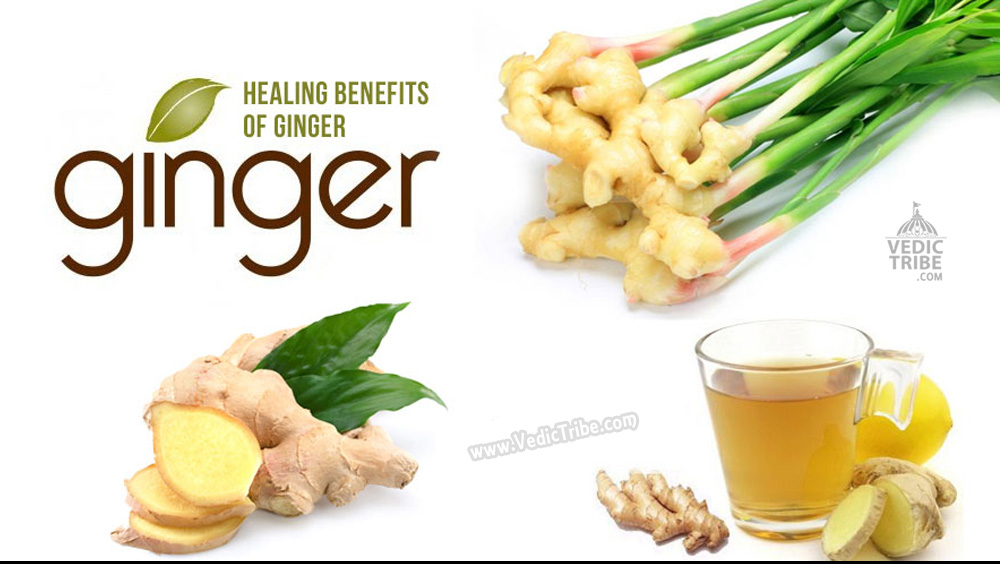
Ayurveda gives ginger the status of a virtual medicine chest. That’s because this wonder spice has time-tested, digestion-friendly properties, in addition to its numerous other health benefits. In India, ginger is liberally used in daily life. Ginger-infused chai is a household favorite, and it’s grandma’s antidote of choice for battling cold and flu.
On millions of dining tables in India, you’ll see matchsticks of fresh ginger that have turned a soft pink from being soaked in lemon juice and salt: a zingy accompaniment to any cooked meal.
Let’s give this knobbly root a closer look.
10 Terrific Benefits of Ginger
Traditional medicine systems all over the world have applied ginger to a wide range of ailments, including calming an upset stomach. Recent studies of ginger have confirmed this effect and much more. Let’s take a look at some of the amazing benefits of ginger.
1. Helps Calm Nausea & Vomiting
Clinical studies have shown ginger’s effectiveness at calming nausea and vomiting. Research has also confirmed its potential for soothing chemotherapy-induced nausea and vomiting. The majority of studies found a positive effect of ginger against this side effect of aggressive therapies
2. Digestive Tract Protection
Ginger has also been used historically for flatulence, constipation, bloating, and other digestive complaints. In addition to these gastro-protective effects, researchers have found ginger to be effective for stress-related ulcers.

3. Brain Health
Ginger contains compounds that have demonstrated protective effects for the brain. One of them, known as 6-shogaol, inhibited the release and expression of redness-causing chemicals which damage neurons (nerve cells). Another ginger compound, 10-gingerol, similarly acted in an anti-neuroinflammatory manner. In other words, fresh ginger’s 10-gingerol reduced redness and swelling in the brain.
4. Migraine Relief
In a clinical trial, 100 patients received ginger powder or a drug given to migraine sufferers. The results showed the ginger powder helped reduce migraine related discomfort without side effects.
5. Protection From UV Rays
Ginger possesses UV-absorbing capabilities that protect against DNA damage related to UVB (ultraviolet-B) light. Extracts from ginger stimulated the production of an antioxidant protein in cells, and provided protective effects against damaging UV light.
6. Supports Stable Blood Sugar
Ginger has repeatedly demonstrated powerful blood sugar balancing effects. It acts on insulin release and sensitivity and supports the metabolism of carbohydrates and lipids. Insulin levels may noticeably lower with ginger supplementation. In addition to its effectiveness as a blood sugar stabilizer, ginger has also shown powerful protective effects against diabetic kidney, eye, and liver complications.
7. Promotes Healthy Blood Pressure
Thai medical practitioners have traditionally used herbs such as ginger to support healthy blood pressure. Extracts from ginger and other herbs used in therapeutic recipes were evaluated for their effectiveness against hypertension. The ginger extract was the most effective.
8. May Benefit Osteoarthritis
A recent study tested ginger against drugs used for osteoarthritis — the ginger extract was demonstrated to be as effective. Another group of people with osteoarthritis found ginger to be as effective and safer than NSAIDs.
9. Helps With Muscle Aches & Discomfort
Ginger can be used to relieve muscle discomfort in female athletes. After taking ginger for six weeks, athketes taking ginger saw a significant decrease in muscle soreness as compared to the placebo.
10. May Benefit Cardiovascular Function
One of the active compounds in ginger, 6-gingerol, has been isolated, tested, and determined to be an active factor in supporting cardiovascular health. Based on the results, researchers are exploring the potentials of ginger as a remedy for cardiovascular concerns.
Using Ginger
Ginger has an extremely robust flavor which makes consuming it a little bit tricky. It might be too strong to ingest on its own, but as I mentioned, it mixes incredibly well into tea or fresh juice. It also makes a great ingredient in many recipes, and you can find it in some healthy snacks.
Ayurveda
A Vegetarian Ethical Diet for Peace and Plenty
Published
5 years agoon
December 3, 2020By
Vedic Tribe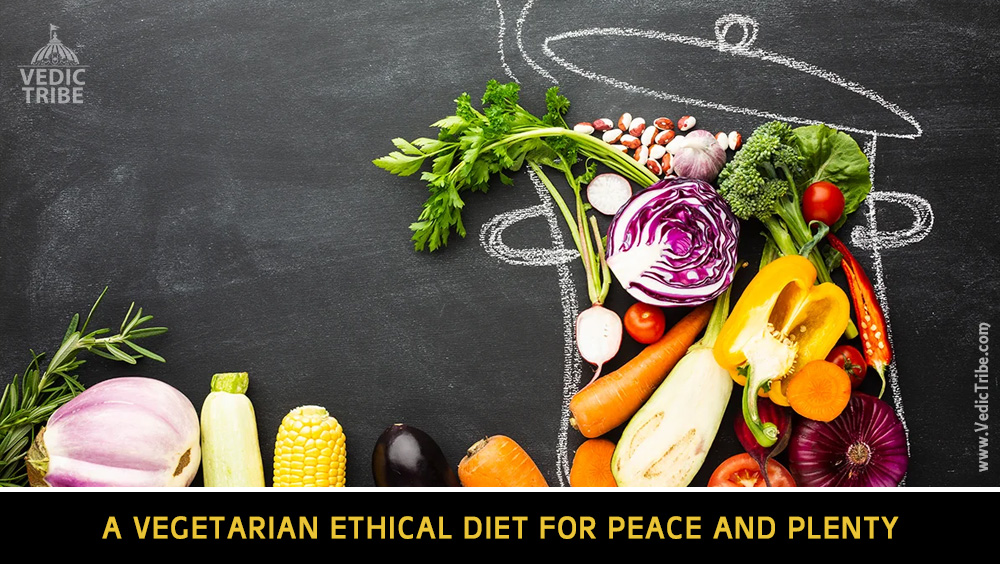
~ R. P. Jain, director of Motilal Banarsidass
Vegetarianism affords an ethical diet for peace and plenty. It is good for health, spirituality, sound ethics, balanced ecology and favorable economics. These are among the reasons a plant-based diet beats meat eating.
In India, the land of AHIMSA (nonviolence) people have traditionally been vegetarian. Hailing from a family of staunch vegetarians, I consider myself fortunate to be living in harmony with the principles of nature. As a follower of Jainism, I strongly advocate a vegetarian diet, which I find superior not only from a moral stance, but also from the health and culinary points of view. Guests at our home, coming from both vegetarian and non-vegetarian backgrounds, are always overwhelmed with what they describe as the unbelievable taste and richness of our vegetarian cuisine.
Sadly, in recent times many Hindus, Jains and Buddhists, especially of the younger generation, are no longer so strict about our precepts and have taken to non-vegetarian food, mostly following the misconception that meat-eating is healthy. Truth must be told; a vegetarian diet is actually much healthier than one based on animal protein. It is argued that there is a lot of protein in meat and eggs, but we do not need so much concentrated protein in our diet. There is plenty of protein in nuts, seeds, pulses and dairy products, which are also far easier to digest.
Vegetarianism supports mental and physical health as well as spiritual cultivation. Fruits, vegetables, pulses, nuts and milk products provide a balanced diet, which does not make our system toxic. This is primarily because when an animal is killed, it becomes dead matter. In the case of many vegetables, if we eat part of the vegetable and re-plant another part, it can grow again; it is still a living organism. It is a healthy sign that more and more people in the US, UK, Europe and other parts of the world are taking to a vegetarian diet in modern times, chiefly due to health reasons. There is a growing acceptance in the West that vegetarianism connotes a more positive way of living than flesh eating. In India, the pilgrimage destination of Haridwar still enjoys the status of being a vegetarian city. Even in Japan, known to be virtually 100 percent non-vegetarian, you can now find vegetarian restaurants. My friend Martin Gluckman, who runs the Vedic Society and teaches organic and Ayurvedic cooking in South Africa, hails Indian vegetarianism in the following words: “India has the world’s greatest cuisine and most variety of dishes, boasting to its amazing cultural and spiritual heritage. It has a time tested vegetarian cuisine offering a delight for all senses and the heart.”
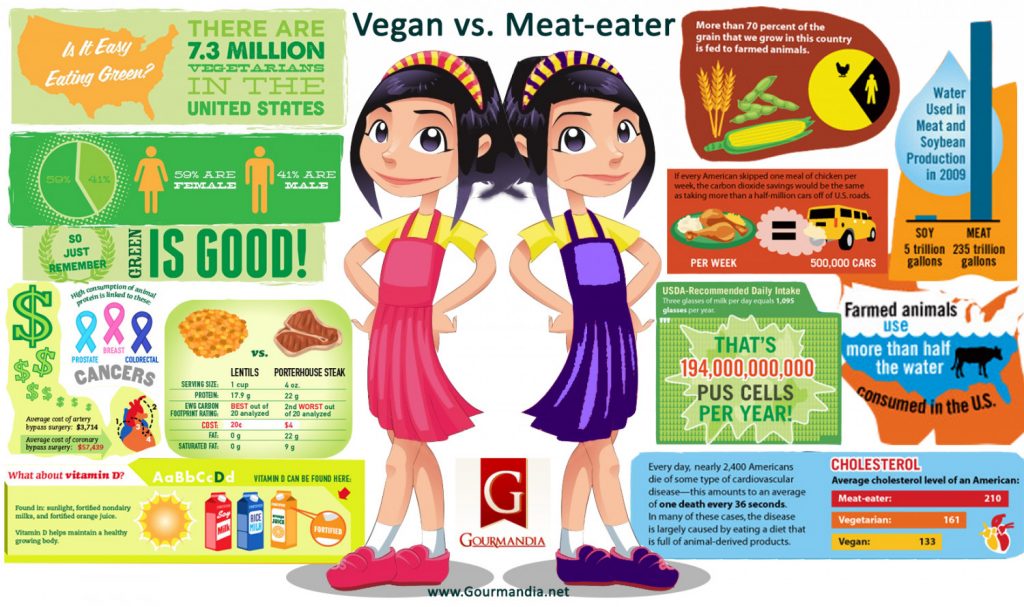
India can be proud to have the world’s largest per-capita number of vegetarians (I have read reports of more than 40%). No other country can make such a statement of humanity and nonviolence. The vegetarian culture and lifestyle are India’s greatest achievement and gift to the world. Only in years to come will the true value of this gift be known.” It is important that we remain vegetarian not only for our health and nutrition, but from the points of view of spirituality, compassion, ethics, ecology and economics as well. When we see the end product of meat in the supermarket or leather in the shoe store, there is a long chain of violence that created it. These products endorse and perpetuate violence in our society, which contributes to the terrorism that is rampant across the world. Eating habits reflect upon a human being’s thoughts, speech and behavior. A non-vegetarian diet makes one prone to violence. By moving away from food of violence we can move rapidly toward world peace.
Albert Einstein affirmed, “It is my view that the vegetarian manner of living, by its purely physical effect on human temperament, would most beneficially influence the lot of mankind.” When a helpless animal is killed by a deliberate act of violence, it dies in great dread. Its body is flush with hormones produced by fear. These toxic substances enter the body of the person who eats the flesh and adversely affect his or her body and mind. I have always wondered, how can the carcass of an animal that died in mortal fear give good health and refined, spiritual inclinations to its consumer?
Additionally, meat production is one of the most environmentally damaging industries in terms of pollution and inefficient use of agricultural land. According to a 2006 report from the United nations Food & agriculture Organization, livestock production is responsible for more greenhouse gasses than all the motor vehicles in the world, plus it severely degrades land and water. It is also necessary to remove the myth and argument that vegetarians will not get enough food if non-vegetarians do not eat meat. This is a fallacy. It has been conclusively proven that more people can be sustained on vegetarian food than a diet based on meat. Live- stock occupy over 30 percent of our planet’s land surface, and 33 percent of global arable land is used to grow their feed, pointing to why a meat-based diet requires seven times more land than a plant-based diet. Thus, one of the easiest ways to help restore our environment and feed more people is to stop raising and killing animals for human consumption. We have no right to take the life of an animal when we cannot give it.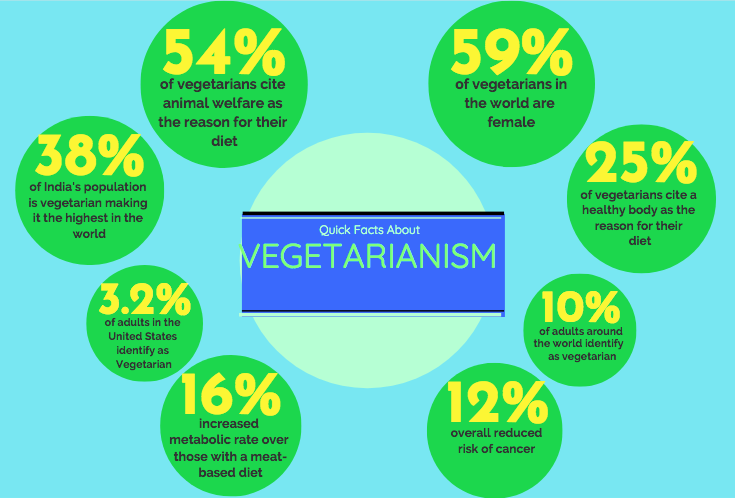
Economically, a vegetarian diet is preferable to a non-vegetarian diet. The same energy one can get from meat and eggs one can get from pulses and cereals. It actually costs three or four times as much money to produce an equivalent amount of calories from animal sources as from vegetable sources. Some people may worry that self-control and too much care about nature would hamper development and bring about poverty. We know too well, however, that the more we consume, the more expensive things become, leading to the growth of the destitute class. Reckless commercial development also results in economic and social crises, bringing further suffering to the poor.
AHIMSA does not deny economic development; it only exercises self-control, limits our desires. Desires are endless. More and more desires give rise to materialism and extraordinary greed, far beyond basic human needs and sustainable consumption. Greed results in the destruction of the very roots of our life. If we want to prevent the world from becoming a barren desert and our societies from growing into monstrous systems of injustice and suffering, self-control and nonviolence appear as the only reasonable answer – not only for Jains, but for people of any creed. For any spiritual being, the destruction of life, be it in the air, the water or on the ground, is undesirable. But even if you do not subscribe to this principle, you will agree that reckless destruction of life could eventually lead to mankind’s own demise. Jainism is not the only Indian school advocating nonviolence and self-control as central principles. Buddhism and Hinduism equally preach them.
Ayurveda
Ayurvedic diet for everyday healthy lifestyle
Published
5 years agoon
December 2, 2020By
Vedic Tribe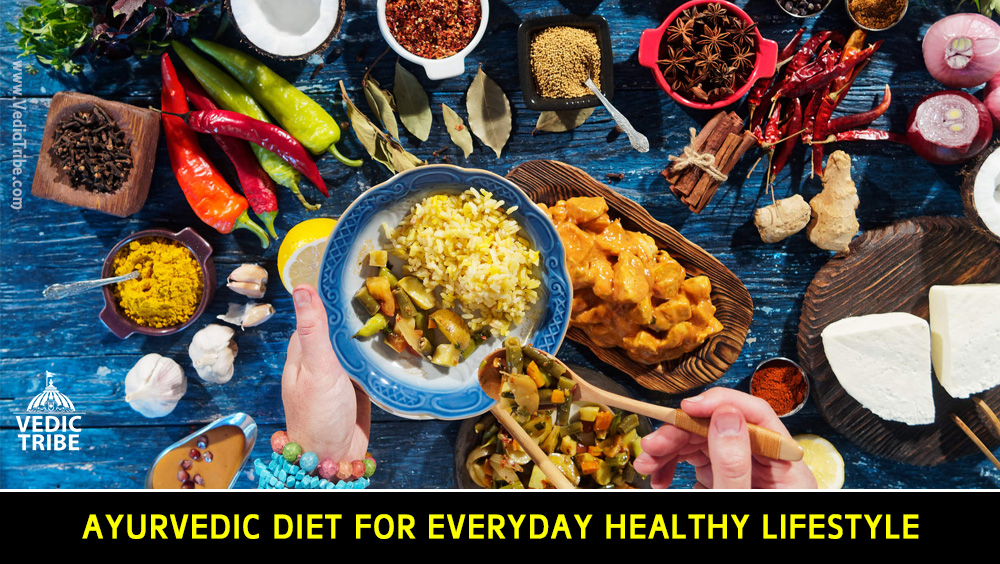
Making an Ayurvedic diet part of you every day lifestyle doesn’t have to be expensive or difficult.
People in the Western world are starting to become more aware of the benefits that Ayurvedic dieting can have on their overall health. However, there are many places that do not have Eastern food markets that are easily accessible.
While it is much easier to find some of the more obscure Ayurvedic foods, herbs, and ingredients in this type of market, the bottom line is that you will be able to find all the foods that you need for this type of diet in pretty much any supermarket.
This article will talk about which foods you should be on the lookout for the next time you go shopping. You will also find out which foods are ideal to consume for your specific dosha, which is another name for an Ayurvedic body type.
First, let us begin be explaining what a dosha is. According to Ayurveda, every person has their own unique blend of three principles of the body and mind. This blend helps to create each person’s unique physical and mental characteristics. Doshas are these three principles.
The three doshas are called Kapha, Pitta and Vata.
If you are unaware of what your dosha is, there are various quizzes online that you can take to let you know. Each dosha has foods that will help to balance it and foods that will aggravate it. The key to maintaining good health through an Ayurvedic diet is to learn which foods to eat and which foods to stay away from as they relate to your dosha.
Ayurvedic dietary recommendations for vata-pitta-kapha type individuals follow a common sense approach, requiring small changes to your food choices and eating habits. The importance of a wholesome diet that includes every food group is heavily emphasized, but there are clear guidelines on specific foods and beverages that should be included or limited. These recommendations are based on the unique properties of your dominant doshas and an analysis of the unique properties of foods, which influences their interaction with the doshas.
When planning an Ayurvedic vata-pitta-kapha diet, we look at 3 important qualities or characteristics of food – Rasa or taste, Virya or energy, and Vipaka or post-digestive effect. Understanding this Ayurvedic classification of food and your unique doshic makeup will allow you to make informed dietary choices. As someone with a tridoshic constitution, which is not very common, you have it pretty easy, as you can enjoy almost all foods in moderation. However, you need to understand the Ayurvedic classication of foods, so that you can recognize what constitutes balance. This may be a little tricky when you’re just getting started, which is why it helps to refer to a dosha-specific diet guide. So, here’s what every vata-pitta-kapha type individual should keep in mind.
Vata-Pitta-Kapha Food Qualities
As a tridoshic individual, you can be vulnerable to imbalances of all three doshas – vata, pitta, and kapha. This makes it important for you to recognize the qualities of each of the doshas. In case you notice signs of aggravation of any one of your doshas, you should modify your diet to pacify that dosha.
In case of vata aggravation, your meals should include a significant amount of foods that are heating, moist or oily and lubricating, grounding, and stabilizing. Salty tastes have a pacifying effect only on vata and should therefore be included too.
In case of pitta aggravation, your meals should include more foods that are cooling, heavy or grounding, and drying. Pitta can be pacified with sweet, bitter, and astringent tastes. However, these tastes can also pacify vata and kapha. This makes it a challenge, as you now need to ensure that you balance your intake to avoid unnecessary vata or kapha pacification. This basically means that a sweet taste that pacifies both vata and pitta, while aggravating kapha, should be combined with bitter tastes that pacify pitta and kapha, while aggravating vata. This would balance the pacifying and aggravating effects on vata and kapha, only pacifying pitta.
In case of kapha aggravation, your meals can include foods that are heating, light, and drying. Kapha can be pacified with pungent tastes as pungency has a pacifying effect on kapha alone, without pacifying your other two dominant doshas.
For a tridsoshic constitution, it is especially important that your diet choices reflect the changing seasons. Vata aggravation is most likely during the months of fall and early winter, pitta aggravation during late spring and summer, and kapha aggravation during winter and early spring.
The Best Foods for Your Dosha
The best way to start your day is with a cup of herbal tea with herbs, using herbs that pacify all three doshas, such as anantamul and brahmi. Herbs like ginger and ashwagandha can also be beneficial, but should not be used during the summer months as they can aggravate pitta.
Breakfast:
Although lunch is regarded as the most important meal of the day, a healthy breakfast helps to keep your energy levels stable through the morning, lowering the risk of unhealthy food cravings prior to lunch. Staying attuned to the seasons and their influence on your doshas, it would be best to consume a light breakfast that includes cream of wheat or barley, or puffed rice or wheat with coconut milk and ghee during summer, fried eggs with sautéed or steamed vegetables or a bowl of cereal with hot milk during the months of fall, and fresh fruits, stewed fruit, fruit juice or smoothies during winter.
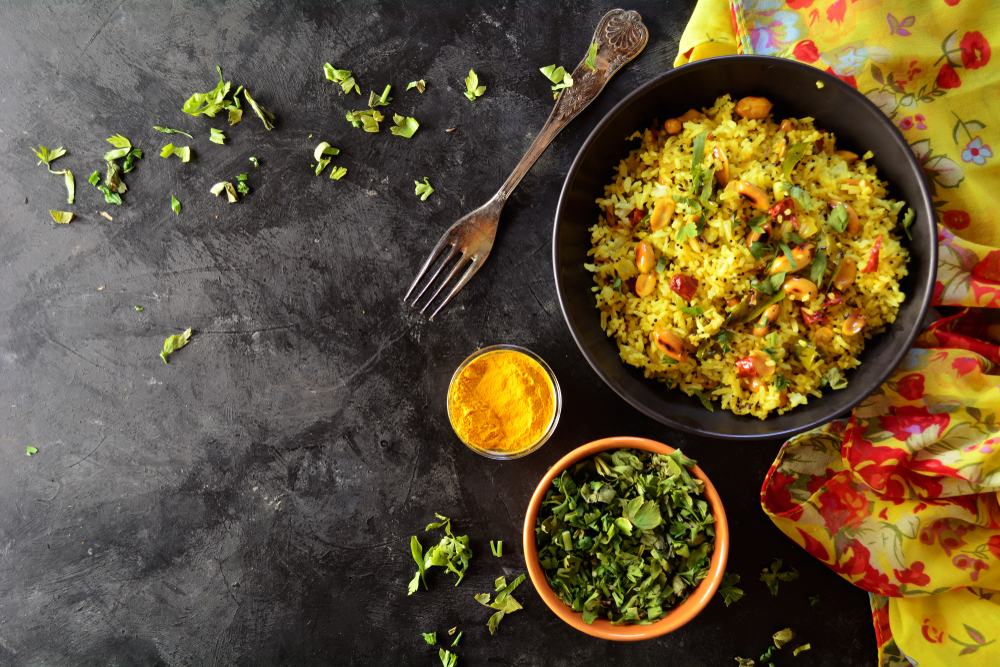
Poha with herbs and spices
Occasionally, you can also consume an Indian breakfast staple called poha that has a balancing effect on all three doshas. Prepared with rice flakes that are similar to rolled oats, the rice is soaked, drained, and lightly fried along with herbs and spices like mustard seeds, cumin seeds, asafetida, cilantro, and curry leaves.
Lunch:
Ayurveda regards lunch as the most important meal of the day, so no matter how busy your schedule may be, try to have a wholesome and balanced meal that includes various food groups. The ideal foods to add to your lunch include the likes of cooked basmati rice or oats or quinoa, with split yellow múng dal and ghee. As an alternative, you could include a whole grain non-wheat pasta. This should be accompanied with sautéed or cooked vegetables like asparagus, artichoke, bok choy, parsnips, parsley, okra, pumpkin, sweet potatoes, yams, squash, and taro root. Raw veggies and salads can be consumed during summer, but in moderation.
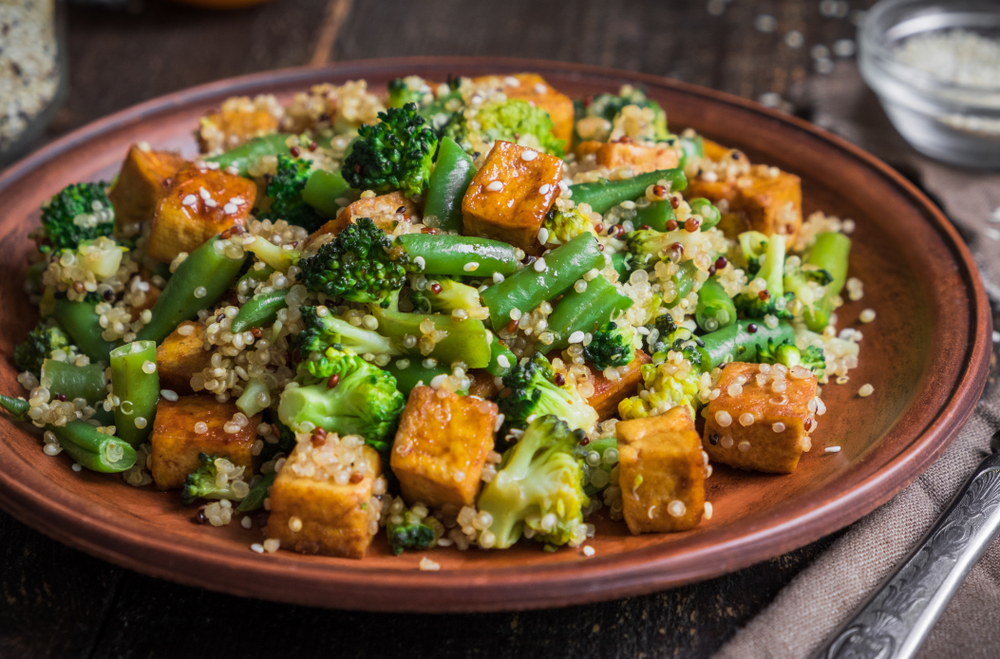
Quinoa with tofu and vegetables
Your meal should also include some healthy protein-rich foods. This could come from legumes like azuki beans, red or green lentils, French beans, black eyed peas, tofu, and tempeh. Meats may be consumed in limited quantities and should only include healthier varieties like fish, chicken, and turkey. Red meat intake and processed meats should be severely restricted or avoided. All of your meals can be garnished with herbs and spices like asafaatida, basil, cinnamon, clove, cumin, dill, fennel, fenugreek, mint, ginger, sage, saffron, rosemary, thyme, and turmeric.
You can follow your meal with a drink of buttermilk or an herbal tea. With a tridoshic constitution, it is important to look for signs of imbalance and to make dietary adjustments to treat aggravation of any dosha, as and when they arise.
Dinner:
Your dinner can include similar foods as at lunch, but the serving size should be significantly smaller. Aside from rice and pasta, you could include a small bowl of soup or stew. Kitchari is a particularly healthy option and can be prepared to meet your special tridoshic requirements. While basmati rice and split mung dal are the staple ingredients in kitchari, you can include herbs and spices like fennel seeds, mustard seeds, cumin seeds, ginger, turmeric, cinnamon, and coriander to cater to your tridoshic needs. This can be accompanied with or combined with vegetables like French beans and carrots.
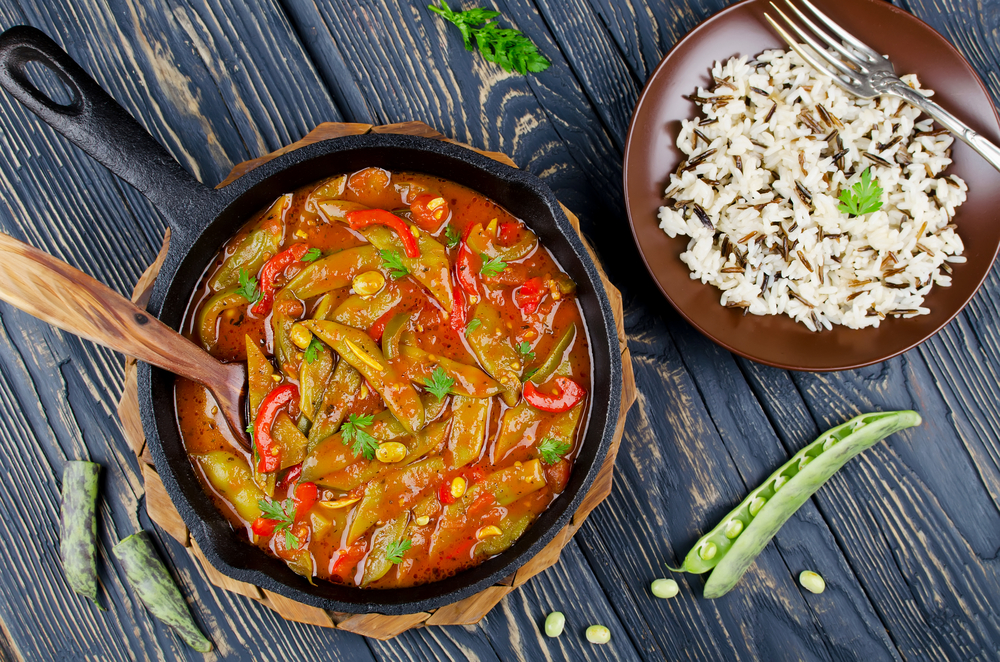
Vegetable stew with beans, paprika and spices
It can help to follow your dinner with a glass of buttermilk or herbal tea, favoring herbs like brahmi, cumin, coriander, and fennel.
Snacks:
With your tridoshic constitution, you have a wider range of snacks to choose from and can include fresh or stewed fruits, dry fruits and nuts, healthy nut butters like almond butter on toast or tortillas, avocado dip with cucumber or celery sticks, roasted yam or sweet potato, berries with coconut milk, and so on. Healthy fruit choices for your dosha type would include apples, avocado, sweet apricots, banana, berries, cherries, grapes, limes, lemon, and pomegranates.
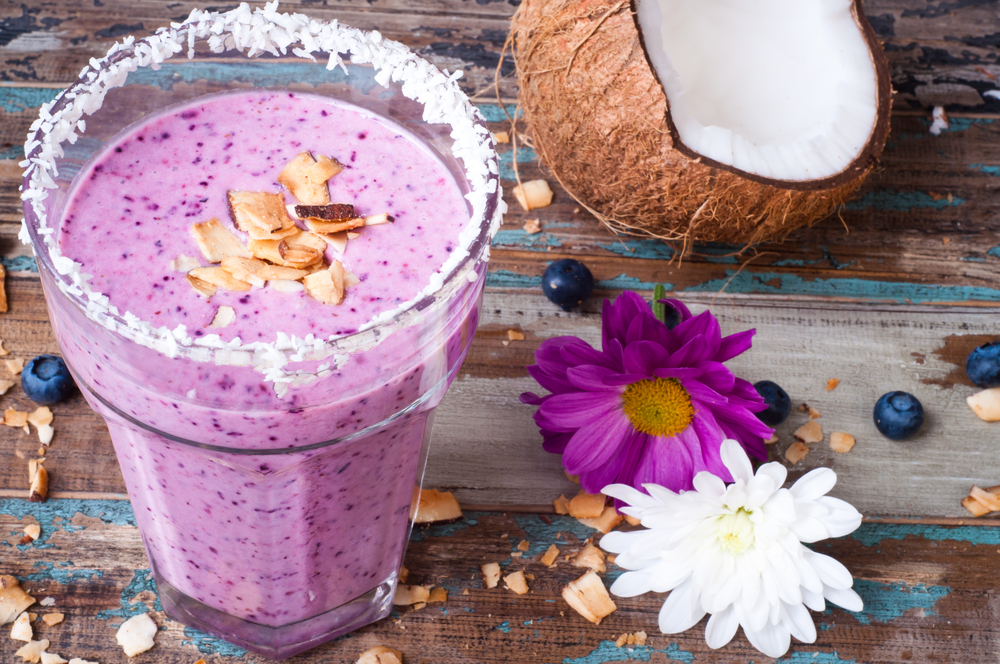
Mixed berry smoothie in coconut milk
Dry fruits like raisins, dates, and dry figs are good options, while nuts like almonds, pine nuts, cashews, and seeds like pumpkin and sunflower are healthy choices. Nuts can be roasted or fried lightly before consumption.
Timing Your Meals
As a vata-pitta-kapha type, you’re probably already aware of the importance of a daily routine or dinacharya in Ayurveda. Meal timings are an important facet of this daily schedule and should be adhered to as far as possible. Keeping this in mind you should consume your:
- Breakfast around 7:30 am
- Lunch around 12 pm
- Dinner around 7 pm
Obviously, adhering strictly to this routine can be challenging, especially when it comes to dinner time. If your work schedule does not allow for an early dinner, simply try to eat as early as you can.
Vata Balancing Foods
There are a wide range of foods that Vata body types can be found at most supermarkets to more easily balance their bodies. Fruits such as watermelon, prunes, plums, pears, mangos, figs, berries, apples, raisins, pomegranates, pineapples, melons, grapes, dates and avocados are all beneficial. Essentially, any sweet fruit you can find will have a balancing affect on a Vata body type. However, you should also be aware that any sour fruits could cause aggravation for Vatas.
In terms of vegetables, Vatas can feel free to indulge in zucchini, squash, parsnips, olives, green beans, beets, and artichokes to name just a few. Vatas should remember that vegetables that are cooked are the ones that are the most balancing. Raw vegetables should be avoided at all times.
Grains such as wild rice, wheat and oats are all beneficial to Vatas.
As far as dairy products go, yogurt, cheese and milk from a goat, milk from a cow, buttermilk and cheese are all able to be consumed in moderation.
Pitta Balancing Foods
The balancing fruits for Pitta body types are similar to those of Vatas. Sour fruits should also be avoided by Pitta’s. In terms of grains, there are a wider variety that are acceptable, including cooked oats, white rice, oat granola, millet, buckwheat, brown rice and wheat bran.
Acceptable vegetables include mushrooms, potatoes, leafy greens, zucchini, artichokes, cauliflower, Brussels sprouts and broccoli. Both bitter and sweet vegetables are considered to be balancing for Pittas.
Kapha Balancing Foods
Kaphas can become easily aggravated by dates, bananas, and other sweet fruits. However, all of the fruits listed for Vata body types are acceptable.
There are many nuts and legumes that are known to be balancing for Kaphas, such as white beans, red lentils, navy beans, sunflower seeds, flaxseeds, black-eyes peas, split peas, pinto beans, lima beans, pumpkin beans, peanuts, coconut, cashews, Brazil nuts and almonds.
Eggs are acceptable, as long as they are eaten in moderation. There are some foods that may be difficult for many people who are Kapha’s to avoid. If you have this body type, you should stay away from all seafood, lamb, duck, pork, freshwater fish and beef. Even venison should not be consumed. Diluted yogurt and goat’s milk are acceptable dairy products.
There are a wide range of condiments, spices and herbs that are balancing for Kapha’s. Thyme, spearmint, rosemary, peppermint, paprika, onion, mustard seeds, horseradish, garlic, dill, cloves, cayenne, black pepper, basil, poppy seeds, parsley, oregano, mint and ginger can all be used to enhance the flavor of your various Ayurvedic meals.
Super Foods From Your Supermarket
Ayurvedic dieting is one of the cornerstones to effective Ayurvedic living. With the number and proximity of large supermarkets in the West, particularly in the US, there is no longer any reason to avoid this central aspect of maintaining a healthy and happy lifestyle!
The Final Word
Your diet is something personal and these guidelines are meant precisely as that – to serve as a guide. You should use your own discretion to choose the right foods and meal times, but these Ayurvedic recommendations can help point you in the right direction. Just make it a point to include as wide a variety of these foods using the information provided. After all, Ayurveda emphasizes the importance of balanced nutrition and the whole range of food available to humans is more than we could fit into a single page! Simply avoid consumption of heavily processed and refined foods, as these foods are known to raise ama levels, increasing the risk of chronic lifestyle diseases.
Follow us on Facebook
Follow us on Twitter
Latest


Seven Vows and Steps (pheras) of Hindu Wedding explained
Views: 8,947 Indian marriages are well renowned around the world for all the rituals and events forming part of the...


Sari or Saree is symbol of Indian feminism and culture
Views: 7,257 One of the most sensual attires of a woman in India is undoubtedly the sari. It is a...


Atithi Devo Bhava meaning in Hinduism and India
Views: 6,973 Atithi Devo Bhava, an ancient line taken from the Hindu scriptures and was originally coined to depict a visiting person whose...


Sanskrit Is More Than Just A Method To Communicate
Views: 5,307 -By Ojaswita Krishnaa Chaturvedi anskrit is the language of ancient India, the earliest compilation of sound, syllables and...


Significance of Baisakhi / Vaisakhi
Views: 6,497 Baiskhi is also spelled ‘Vaisakhi’, and is a vibrant Festival considered to be an extremely important festival in...


Navaratri: The Nine Divine Nights of Maa Durga!
Views: 7,614 – Shri Gyan Rajhans Navratri or the nine holy days are auspicious days of the lunar calendar according...


History of Vastu Shastra
Views: 10,705 Vastu Shastra (or short just Vastu) is the Indian science of space and architecture and how we may...


Significance of Bilva Leaf – Why is it dear to Lord shiva?
Views: 10,404 – Arun Gopinath Hindus believe that the knowledge of medicinal plants is older than history itself, that it...


Concept of Time and Creation (‘Brahma Srishti’) in Padma Purana
Views: 10,648 Pulastya Maha Muni affirmed to Bhishma that Brahma was Narayana Himself and that in reality he was Eternal....


Karma Yoga – Yog Through Selfless Actions
Views: 9,581 Karma Yoga is Meditation in Action: “Karma” means action and “yoga” means loving unity of our mind with...

